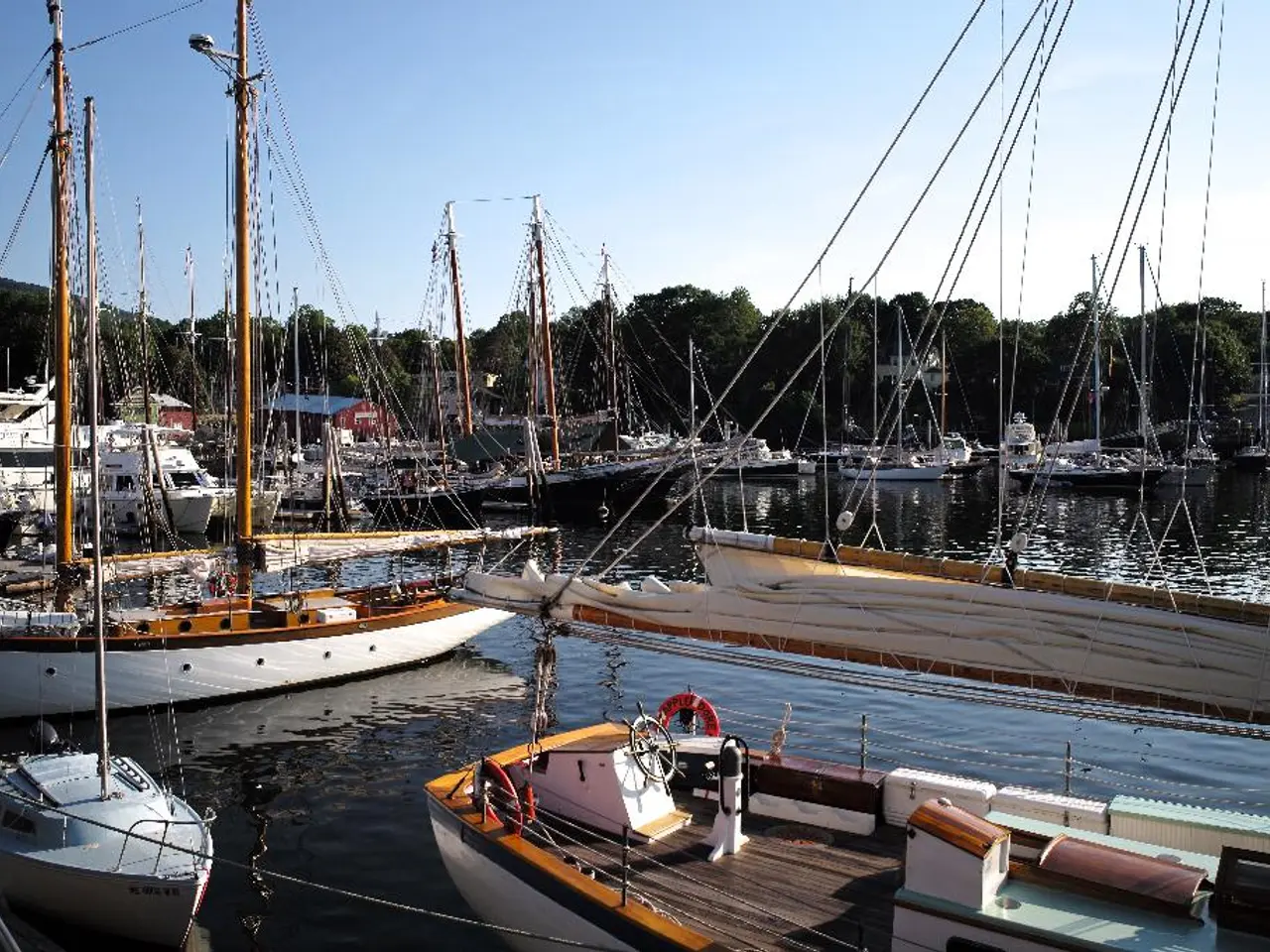Asian cyclones have intensified, causing port closures and delays, consequently leading to an increase in emissions.
====================================================================================================
The maritime industry faced a series of challenges in 2024, with external factors and events causing strain and disruptions. From geopolitical tensions to extreme weather events, these obstacles affected efficiency and progress, and had severe implications for both the global economy and the environment.
In the Asia Pacific region, commercial vessels in the Red Sea encountered attacks in 2024, causing delays and rerouting of vessels. These incidents, carried out by the Houthi insurgents, had a ripple effect on the industry, leading to longer routes and delayed delivery times.
The maritime operations were also affected by extreme weather events. Typhoon Dindo struck the Philippines in August, followed by Typhoon Man-yi in November. Both typhoons disrupted shipping routes and caused delays in deliveries worldwide. Similarly, Cyclone Bindu hit Sri Lanka, adding to the list of weather-related challenges.
One positive development was the improvement in emissions intensity. Despite the disruptions, the emissions intensity decreased from 220 "well-to-wheel" grammes of carbon dioxide equivalent (WTW g CO2e) for every kilometre a unit of cargo travelled (km TEU) in 2023, to 209 WTW g CO2/km TEU in 2024. However, it's important to note that the disruptions to global sea routes caused delays in deliveries, contributing to higher emissions.
The increased container imports from China to Mexico, a result of US-China trade tensions, also contributed to longer routes and delayed delivery times. These factors have severe implications for the environment, with longer voyages, more idling times, and rerouting of vessels leading to increased emissions.
The story is related to the United Nations Sustainable Development Goals (SDGs) 9 (Infrastructure) and 12 (Consumption). It is also related to topics such as carbon footprint, emissions, energy efficiency, fossil fuels, marine, shipping, supply chain, extreme weather, and transport. The regions affected include Asia Pacific, Hong Kong, Philippines, and Sri Lanka.
Looking ahead, analysts predict that greenhouse gas emissions and emissions intensity are flattening, but predicting for 2025 and beyond is challenging. The Greek technology company, Poseidon-Tech, has published a report on the impact of extreme weather events on shipping supply and emissions, providing valuable insights into these complex issues.
As the maritime industry navigates through these challenges, it becomes increasingly important to find solutions that balance economic growth with environmental sustainability. The industry must continue to innovate and adapt to ensure a more resilient and efficient future.
Read also:
- Peptide YY (PYY): Exploring its Role in Appetite Suppression, Intestinal Health, and Cognitive Links
- Toddler Health: Rotavirus Signs, Origins, and Potential Complications
- Digestive issues and heart discomfort: Root causes and associated health conditions
- House Infernos: Deadly Hazards Surpassing the Flames








